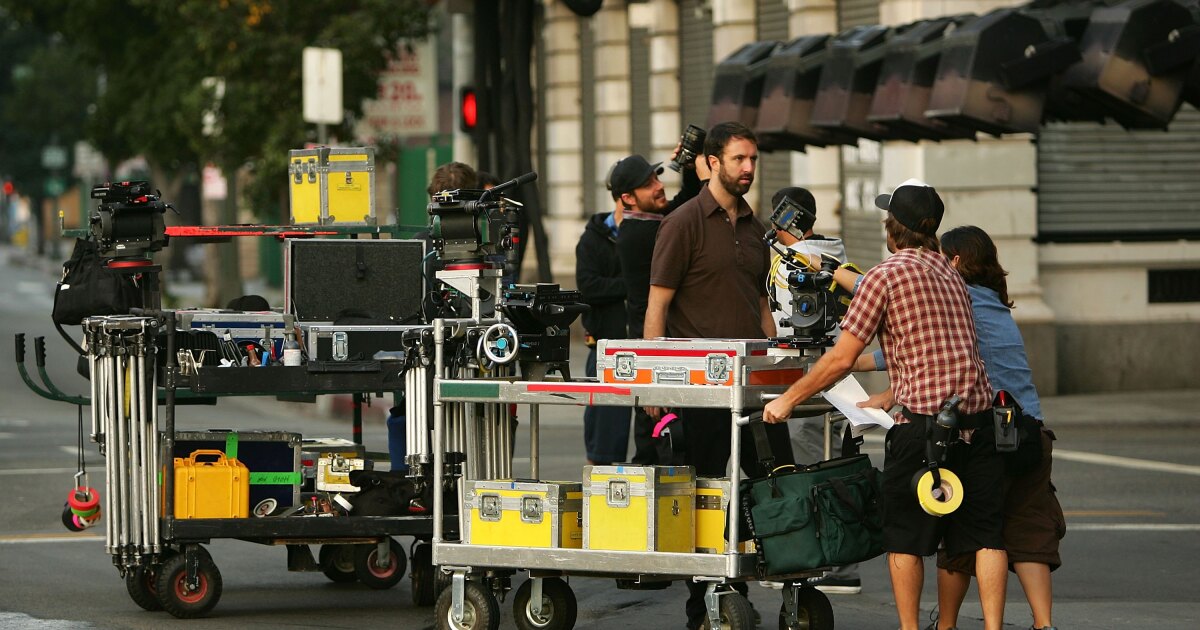Filming in the Los Angeles area has officially returned, but last year’s dual Hollywood strikes affected filming in the area led to historically low filming in the area.
According to the most recent report from FilmLA, which issues permits for on-location shoots in the city and county of L.A., there were 5520 days of filming between October and December, an increase of about 200 from the previous quarter. Meanwhile, there were more than 8600 days of filming during the same period of 2022.
“The pandemic year aside, we have to look very far back — farther back than permit records allow — to find a time when production levels stayed so low, for so long,” FilmLA President Paul Audley wrote in the report.
The end of the WGA strike in September and the SAG-AFTRA strike in December led to some increased filming activity toward the end of last quarter. However, FilmLA said this came too late for there to be any noticeable difference, with the number of permits reaching near their lowest levels ever.
This drop in filming activity has affected local businesses that work with the entertainment industry, like the North Hollywood-based prop warehouse History For Hire.
“You incur these debts over the course of the seven-month strike,” History For Hire co-owner Pam Elyea said. “Plus the cost of living goes up. It may have been a seven month strike, but it may take you two to three years to dig out from it.”
Elyea isn’t worried about History For Hire’s long-term survival, in part because the owners knew to keep cash reserves on hand after previous strikes.
“Probably the biggest one I remember is 2008 and that took us a couple of years to dig out of,” Elyea said. “So we certainly knew how to get through this strike and had the reserves to do it. But what it does do is it does deplete funds that you were going to use to grow your business.”
Elyea said even with the strikes, this winter and spring will continue to be a difficult time for many.
“I have a lot of fabulous clients that haven’t found a show yet, or maybe their show is going to start in February or March,” Elyea said. “They need to work now. There’s not some of those smaller interim shows that they could pick up.”
Even before the strikes, filming in L.A. had already been trending downward, including areas like web and television commercials that were unaffected by last year’s work stoppage. Those declines were much less steep compared to film and scripted series, with a drop of just 10 percent compared to last year.
“We’re telling people we want a full quarter — January, February, March — to see what things really look like when everything settles out,” Audley told LAist in December.
There are signs that the local film industry is on its way to recovery. According to FilmLA’s report, dozens more television projects are scheduled to start filming by the end of this month.
However, many entertainment industry workers still have long-term concerns about staying in the industry even if Hollywood rebounds.
“I’m hoping that my staff wants to continue to do this, but I’ll tell you the strike was certainly hard on them,” Elyea said. “Right now everybody’s pretty committed to moving forward and all that. But if you were to ask them ‘Do you want to be doing this in 15, 20 years, ‘I think their concern would be it’s such an unpredictable business.'”
What questions do you have about Southern California?





